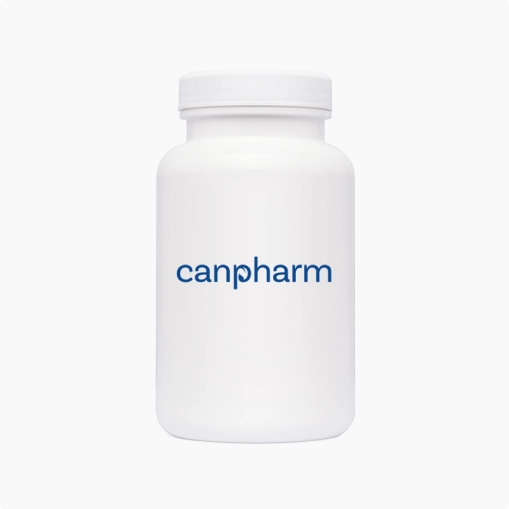
Levemir (Insulin Detemir)
Out of stock
We will notify you as soon as it becomes available.
-
Description
-
Related Products
-
Related Conditions
Fact Table
| Fact Table | |
|---|---|
| Formula | C267H402N64O76S6 |
| License | FDA approved |
| Bioavailability | ~60% (subcutaneous injection) |
| Legal status | Prescription only |
| Chemical Name | Insulin detemir recombinant |
| Elimination half-life | ~5–7 hours (prolonged action up to 24 hours) |
| Dosage (Strength) | 100 units/mL (U-100) |
| Pregnancy | Category B – Generally safe; consult doctor |
| Brands | Levemir |
| Protein binding | >98% |
| PubChem CID | 16131229 |
| MedlinePlus | a605039 |
| ChEBI | 70712 |
| ATC code | A10AE05 |
| DrugBank | DB01307 |
| KEGG | D07236 |
| Routes of administration | Subcutaneous injection |
Levemir is a long-acting insulin analog used to improve blood sugar control in adults and children with diabetes mellitus. It is designed to help mimic the body's natural insulin, providing a slow, steady release over a 24-hour period, thus aiding in maintaining a consistent blood glucose level throughout the day and night. Levemir is available in FlexTouch pens, making administration convenient and precise.
Before you buy Levemir, it is crucial that you talk to your healthcare provider about potential side effects and affordability.
Directions
The initial dose of Levemir insulin should be determined by your healthcare provider, based on your current insulin regimen, blood glucose levels, and response to previous insulin therapies.
Levemir is injected subcutaneously, usually in the thigh, upper arm, or abdomen. Rotate injection sites within the same region to reduce the risk of lipodystrophy and cutaneous amyloidosis.
For optimal blood sugar control, Levemir should be administered once or twice daily, according to the advice of your healthcare provider. When used twice daily, it is recommended to inject the evening dose with dinner, at bedtime, or 12 hours following the morning dose.
Dose adjustments may be necessary based on meals, physical activity levels, and blood glucose monitoring results. Always consult your healthcare provider before making any adjustments to your insulin regimen.
Ingredients
Active Ingredient: Insulin detemir.
Cautions
The most common adverse effect of any insulin, including Levemir, is hypoglycemia. Monitor blood glucose levels regularly and know the signs of low blood sugar, which include dizziness, sweating, confusion, and heart palpitations.
Insulin treatments, including Levemir, may cause potassium levels in the blood to fall (hypokalemia), which can be serious. Be aware of hypokalemia symptoms such as muscle weakness, cramps, or an irregular heartbeat.
Levemir FlexTouch pens should never be shared between patients, even if the needle is changed, due to risks of transmission of blood-borne pathogens.
Interactions
Medications that may interact with Levemir include, but are not limited to oral antidiabetic agents, thiazolidinediones (TZDs), beta-blockers and alcohol. Consult with a healthcare provider for a comprehensive list of interactions.
Side Effects
While many people using Levemir do not experience severe side effects, some potential adverse reactions include:
Common Side Effects: Hypoglycemia, allergic reactions at the injection site (redness, swelling, itching), lipodystrophy, weight gain, and mild swelling of arms and legs.
Serious Side Effects: Severe hypoglycemia, serious allergic reactions (whole body reactions, anaphylaxis), heart failure in combination with thiazolidinediones (TZDs), and severe hypokalemia.
Rare Side Effects: Vision changes, changes in fat tissue (lipodystrophy) at the injection site, and potential for anti-insulin antibodies formation.
Frequently Asked Questions about Levemir (Insulin Detemir)
How is Levemir dosed?
Your doctor will determine your dose based on weight, insulin sensitivity, and blood sugar levels. Doses may differ between type 1 and type 2 diabetes.
How does Levemir help lower A1c?
Levemir improves fasting blood glucose, which contributes significantly to lowering A1c — a measure of average blood sugar over 3 months.
What are signs of low blood sugar on Levemir?
Signs of hypoglycemia include:
Shakiness
Sweating
Dizziness
Confusion
Hunger
Severe hypoglycemia may require glucagon or emergency care.
Can Levemir be used with oral diabetes medications?
Yes. In type 2 diabetes, Levemir is often used alongside metformin, SGLT2 inhibitors, or DPP-4 inhibitors.
Is there a generic version of Levemir?
As of now, there is no FDA-approved generic for Levemir, but biosimilars may be developed in the future.
How do I rotate injection sites with Levemir?
Rotate within areas like the abdomen, thigh, or upper arm. Avoid injecting into the same exact spot repeatedly to prevent tissue damage.
Can I use Levemir in an insulin pump?
No. Levemir is not approved for use in pumps. It is designed for subcutaneous injection only.
Can I take Levemir with breakfast?
Yes. If prescribed once daily, Levemir can be taken in the morning or evening, depending on your needs. Consistency is key.
How long is Levemir good once opened?
Levemir is stable at room temperature for up to 42 days once opened. After that, discard any remaining insulin.
Does Levemir interact with other medications?
Yes. Drugs like steroids, beta-blockers, or diuretics can affect how insulin works. Always inform your provider about all medications you take.
